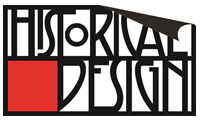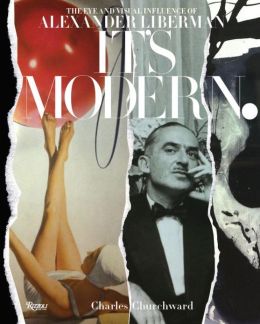Product Description
Alexander Liberman / Meyer Schapiro Portfolio Untitled 1973


ALEXANDER LIBERMAN (1912-1999) USA
MEYER SCHAPIRO PORTFOLIO 1974
Untitled 1973
Silkscreen, patinated bronze frame
Signed: A. Liberman 1973, Artist’s proof, 2RC (embossed on paper)
Canvas: H: 33” x W: 25 1/2”
Frame: H: 42 1/2” x W 33 1/2”
Portfolio of 12 works, Edition of 100
Price: $
Alexander Liberman’s family left the Soviet Union for London as exiles in 1921. Liberman studied there briefly before moving to Paris where he undertook philosophy and mathematics at the Sorbonne and architecture at the École des Beaux-Arts. In the 1930s Liberman designed stage sets, and worked on the staff of Vu, the first magazine illustrated with photographs. Although Liberman quickly earned the title of managing director, he left the magazine in 1936, and devoted himself to painting and writing. In 1941, he left Paris for New York. Again, he became involved in publishing after gaining employment at Vogue magazine. Twenty years later, in 1962, he became Editorial Director of all Condé Nast Publications, a position he held until he retired in 1994. During his time at Vogue, Liberman introduced 20th-century art to readers by using it as a backdrop for fashion shoots, as well as by profiling living artists in the magazine. As a painter, Liberman exhibited geometric circle paintings in galleries and museums around New York in the 1950s. Liberman also had an interest in sculpture, and began welding steel into public works in the late 1950s. These monochrome geometric sculptures are featured in over 40 cities worldwide.
Alexander Liberman / Meyer Schapiro Portfolio Untitled 1973
HUBERT SCHMALIX (1952-) Austria
Häuserbild 1989
Oil on canvas
Signed and dated on back: Schmalix 89
Exhibited: Galerie Krinzinger Vienna 1990 (Solo exhibition)
Illustrated: Nach Schiele, Tobias G. Natter and Thomas Trummer (Köln, Germany: Atelier Augarten, DuMont, 2006), p 142.
Provenance: Private Collection Vienna
For related works by Hubert Schmalix see: Hubert Schmalix, Lóránd Hegyi exhibition catalog (Museum Moderner Kunst StiftungLudwig Wien) November 19, 1994 – January 1995.
H: 85” x W: 49”
Hubert Schmalix was born in Graz, Austria, on December 17, 1952 and studied at the Vienna Art Academy from 1971 to 1976. By 1979 Schmalix was showing work at the forward-looking exhibition ‘Europa 79 – Kunst der 80er Jahre’ in Stuttgart. In 1983 the London Tate Gallery invited Schmalix to present work at ‘New Art’, an important survey of contemporary art. Schmalix has become well-known world-wide as an exponent of ‘New Art’, working with a retrospective glance at both classical art history and modern art. Schmalix focuses on the world of things and the human figure. Although the expressive gesture was the dominant feature of his 1980s work, it yielded early in the 1990s to stringent tectonic composition. In 1984 Hubert Schmalix went to the Philippines and on to the US, moving to Los Angeles in 1987. In 1986-87 Schmalix taught at the Academy for the Decorative and Applied Arts in Vienna and from 1997 he has been a professor at the Vienna Art Academy. Schmalix is a visiting professor at the University of California Los Angeles (UCLA). In 1993 his work was featured at the Venice Biennale and in 1998 he was awarded the Fine Art Prize of the City of Vienna. Schmalix has done several large fresco cycles in Salzburg and his work has been shown extensively at numerous international solo and group shows and most recently at Art Basel 2006.
The Kunstforum in Vienna is dedicating a major retrospective show to Hubert Schmalix from May 6th – July 12th, 2015.
“I’m not nervous or angry when I paint, but well rested and concentrated. Each stroke of the brush is important! I’ve painted a whole lot of beautiful pictures this way.” (Hubert Schmalix)
CLAIRE MCCARTHY FALKENSTEIN (1908-1997) Coos Bay, OR
“Chase” 1955
Structure-graphic, unique impression of metal sculptural forms on handmade paper (artist’s proof), steel frame.
Signed: “Claire Falkenstein ‘55” (on bottom right corner), “E prevue d’artiste” (on bottom left corner), #6, “Chase”, Structura grafica, Milano, Italy, Giorgo Unglio Shop (label on back)
*** A related structure-graphic from 1952-55 is in the collection of the Yale University Art Gallery.
Framed: H: 15 11/16” x 22 9/16”
SOLD
Falkenstein was born in the first decade of the century and was still hard at work in the last. Her life was precisely coincident with the 20th century, and she was a full participant in the tumultuous events in the art world. Her work incorporated modern technology, process, assemblage, chance, light, space, and what has been called “anti-form” as creative principles. Falkenstein was a contemporary of the Abstract Expressionists but, in fact, started sooner, lasted longer, and surpassed them in formal vocabulary, in the variety of materials she used and in her highly experimental techniques. Starting her career, (working, teaching and exhibiting} in San Francisco until 1950 when she moved to Paris for a dozen years to pursue her art career, where her association with critic Michel Tapié and his group Art Autre developed into many commissions including the gates at the home of her longtime friend Peggy Guggenheim in Venice, Italy. She returned to Venice, California in 1960. In other words, like a heat-seeking missile, she found and participated in the liveliest and most challenging art centers of the time. During her career she created over four thousand sculptures, paintings, and drawings, and became known for her innovative and often controversial abstract public art. Among major commissions were the windows for St. Basil’s Catholic Church, and fountains at California Federal Savings (now destroyed) and California State University. Putting her in the immediate milieu of many of the century’s greatest artists, she studied, worked, competed, collaborated and, in several cases, became close personal friends with several, including Alexander Archipenko, Clyfford Still, David Smith, Hans Arp, Mark Tobey, Antoni Tapies and Alberto Giacometti. Many years later, she said: “…there were marvelous things, marvelous people, but I took it all in stride. I was completely engrossed in what I was doing. There were people who were accustomed to being treated with deference and I guess I didn’t – and I guess that’s why they got interested.” (Falkenstein, Oral History, UCLA) Throughout Falkenstein’s career, she created a prodigious amount and variety of work, well beyond the traditional categories of painting and sculpture. She explored printmaking, ceramics, functional art, jewelry, and public monuments — ranging from the miniature (jewelry) to the colossal (50’ fountains and 100’ stained glass windows). And in each of these areas, her accomplishment has been consistently and unmistakably of historical significance.
